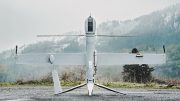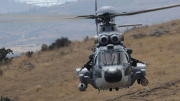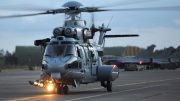A few years ago we could have chosen the same heading for Boeing. Now it’s Airbus’s turn. But there would seem to be one crucial difference between the Airbus strategy and the policy of Boeing, a company that had until recently held the pole market position since the very beginning of commercial aviation.
While Boeing has always delegated a substantial part of its activities to its partners (to avoid using the term subcontractors, which some consider discriminatory), Airbus has built up a network of associated partners, preferring not to leave full responsibility for large areas of its aircraft development to independent entities.
We saw this strategy illustrated in May when Airbus Group CEO Tom Enders proclaimed his support for the “Make in India” concept. The civil aviation side of the group, “Airbus”, has clearly opted for this philosophy for some time, creating Airbus Tianjin – a joint venture led by Airbus in partnership with Tianjin Free Trade Zone Investment Company Ltd. (TJFTZ) and AVIC (Aviation Industry Corporation of China) – as well as inaugurating Airbus Mobile in the US on 14 September, in which it holds a 100% stake. Each of these final assembly lines has the capacity to assemble four Airbus A320s per month. They are built on the model of the Hamburg main assembly site for the family of aircraft including the A318, A319, A320 and A321, together with their ACJ versions and now the re-engined “neo” (new engine option) version.
Airbus civil aviation has for years adopted a policy – an industrial strategy I should say – characterised by the initial sharing of development and production costs with partners, but has always sought to keep an eye on its production. For instance, even though the previous head of the Airbus group chose to cut loose its European industrial units so that they became fully independent, the newly created entities – apart from one unit in England sold to GKN Aerospace and another in France bought by Daher, which earlier this year chose to abandon the Socata brand name – have for the time being remained within the group. These are Premium Aerotec in Germany, which has grown up around the Airbus plants in Nordenham, Varel and a part of the Augsburg factories, and Stelia which was born in early 2015 of a merger between Aerolia (the former Airbus Méaulte units, one of its St Nazaire units and part of its design office in Toulouse) and Sogerma (Bordeaux and Rochefort). This can be seen as one step towards greater consolidation of the aerostructures sector. But for now, Airbus is keeping a close eye on these entities, anxious to succeed in ramping up production of the A350 XWB family and the single-aisles which are currently transiting from the A320ceo to the A320neo.
Airbus civil aviation is at present negotiating with China to build an interior fittings line and an Airbus A330 delivery centre. These will be set up with the European aircraft manufacturer’s traditional partners, in the existing line in Tianjin, and follow confirmation last week in Toulouse of a firm order for 45 aircraft of this type, with 30 further planes in option. With this order the project has come to the forefront again. As we can see, each time Airbus sets up elsewhere than in its European home countries it does so via a partnership in which it keeps a tight hold on the reins.
Tom Enders is clearly determined to ensure that the group he heads continues on this path. Last May, the Airbus Defence & Space division signed an agreement with the Indian group Tata stipulating that following off-the-shelf delivery of a batch of 16 C295 aircraft to India, 40 other aircraft were to be assembled by Tata Advanced Systems at its plant in Hyderabad, southern India, via a technology transfer.
In early July, Bloomberg reported that Enders had met up with Vietnamese Prime Minister Nguyen Tan Dung in Hanoi and that they had raised the possibility of creating an Airbus parts manufacturing unit in Vietnam. This country has placed 9.8 billion dollars’ worth of orders with Airbus aircraft manufacturing division in less than two years. In this case the strategy is less win-win than tit-for-tat. Furthermore, it could also be a way for Airbus of increasing its output capacity, helping it ramp up production. And these ongoing or planned discussions in Vietnam concern not only Airbus commercial aircraft manufacturer but all divisions of Airbus Group, including helicopters and defence and space.
Indeed, in commenting on Airbus Group being on all fronts, we cannot overlook Airbus Helicopters, which has just signed a partnership agreement with the Indian company Mahindra Defence to produce helicopters in India to meet the country’s needs. India, a difficult country to access, has already backtracked many times in the past ten years on its tender for reconnaissance and surveillance helicopters. It could however involve 200 rotorcraft, while the country also has a critical need for multirole helicopters (over 120) and replacement helicopters for its aging Alouette IIIs.
And that’s not all: only a few months previously, Airbus Helicopters signed a historic agreement with China under which, over the next 20 years, the twin-engine EC175 produced at Marignane would incorporate equipment manufactured by the Chinese Avicopter while its Chinese variant, the AC352, would be produced at Harbin in the northeast of the country.
Nicole Beauclair for AeroMorning









Be the first to comment on "Airbus Group on all fronts"